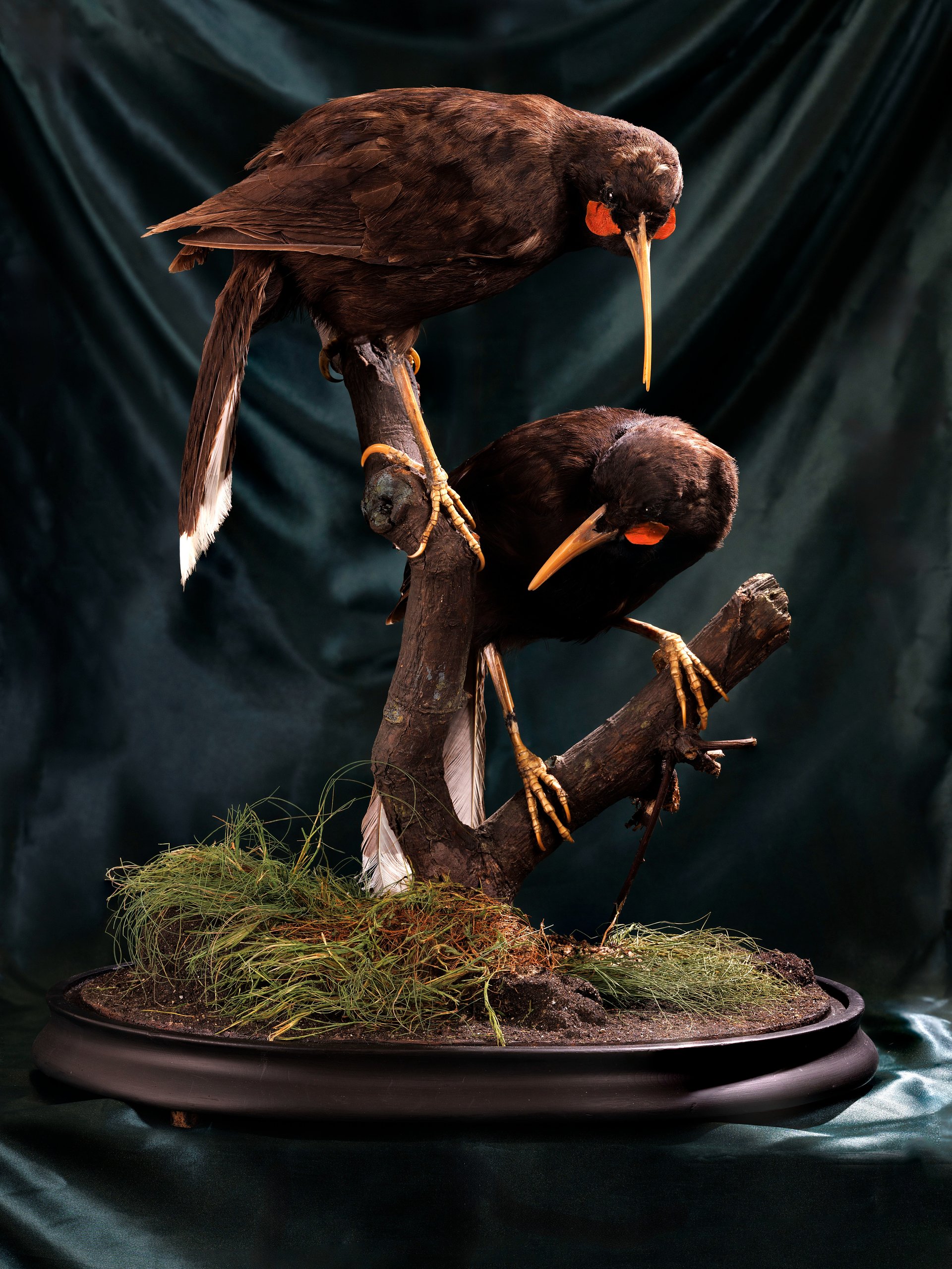In brief: A rare pair of extinct New Zealand Huia birds, last sighted in 1907, will be auctioned at Roseberys London on October 2 with an estimate of £40,000-60,000.The taxidermy pair, consigned by a British private vendor, are a rare example of both male and female specimens in excellent condition presented together. A single feather of the bird recently set a world record as the most expensive feather sold at auction.
Leading Roseberys’ October Fine & Decorative auction is a rare pair of extinct taxidermy New Zealand Huia birds dating to the late 19th century. Last sighted in 1907, specimens of these striking songbirds are rarely seen on the market and displays showcasing both a male and female bird are even harder to come by.
Consigned by a British private vendor, these eye-catching, large examples, with deep metallic, bluish-black plumage, orange wattles and long white-tipped tail feathers are in very good condition and represent a rare opportunity to acquire a fine example of an extinct species.
Native to the North Island of New Zealand, the female and male Huia had dramatically different bill sizes and shapes; the female beak being long, slender and curved while the male beak was stouter and shorter. The male used its shorter bill as an axe to dig into decaying wood to extract huhu larvae as well as other insects, while the female with its longer decurved bill could extract larvae from more solid wood.
The huia bird was already a rare species before the arrival of Europeans to New Zealand. They were a sacred bird to the Māori, who prized the tail feathers and wore them as a mark of status. Often worn in the hair by Māori of rank, the twelve unique black and white-tipped tail feathers of the huia represented chieftainship (Rangatiratanga). The feathers were also gifted or traded between iwi (people) for other taonga (treasures) to create and maintain important tribal relationships. They were similarly given to non-Māori as a sign of respect and acknowledgement. Furthermore, the tail plumes became fashionable in Britain after the Duke of York was photographed wearing one during a 1901 visit to New Zealand which sparked a dramatic rise in the capture and hunting of the species.
The logging and burning of native forests by European settlers in the nineteenth century to make way for farming in the lowlands of the North Island was also a major contributing factor to the decline in population and ultimate extinction of huia birds.
The Roseberys specimens are full mount adults, displayed with the female perched above the male on a tree branch set on a naturalistic base under a later glass dome. The auction estimate is £40,000-60,000.

Lot 56: A pair of rare extinct taxidermy New Zealand Huia birds (Heteralocha acutirostris), late 19th century, comprising full mount adults, the female perched above the male on a tree branch, on a naturalistic ebonised base with soil and grass, within a later glass dome, approx. 57cm high, 40cm wide, 32cm deep overall
